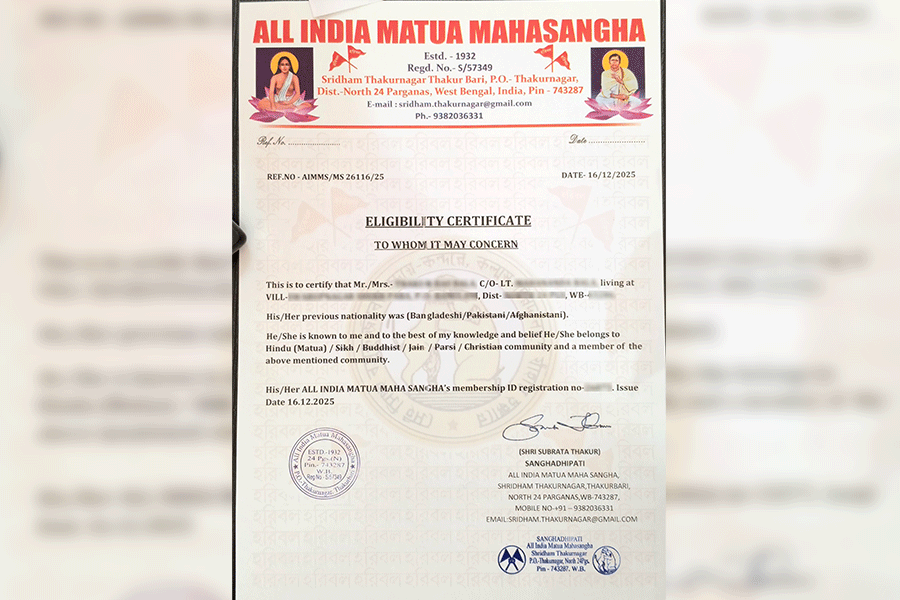 |
| The beehive on a cornice of the medical block of MGM hospital in Sakchi on Monday. Pictures by Bhola Prasad |
Expectant mothers and infants are at risk at MGM Medical College and Hospital.
The state-run heal hub, where a cornice crashed last week, is now a beehive of activity. Literally. A giant hive is hogging a second floor window of the busy G+3 medical block, which houses the pediatrics ward on the ground floor and gynaecology department on the first floor, for over a week now.
“Madhumakkhi ka chhata pichle ek hafte se dikh raha hai. Din mein thoda hawa chalne se madhumakkhiyan ward ke andar ghus aati hai, bahar mein bhi logon ko kaat deti hai (The honeybee hive has been there for a week. A breezy day brings them swarming into the ward. They also sting people outside the block),” said a security guard at MGM on the condition of anonymity.
Kin of patients agreed.
“Saniwar ko main apni bahu ke paas baithi thi aur ek madhumakkhi aakar mere gale mein kaat di. Kuch aur logon ko bhi kata (I was sitting by the bed of my daughter-in-law on Saturday when I was stung in the neck. Some others were attacked too),” said Chhaya Rajak, a resident of Hume Pipe Area.
The 40-bed paediatrics ward has occupancy of more than 35 and a daily admission rate of 10 while the usually overcrowded 50-bed gynaecology unit sees 70 occupants and witnesses 15-20 daily admissions. The medicine department on third and fourth floors has a combined capacity of 125 and occupancy between 100 and 110. Over 40 patients are brought in every day.
The hospital authorities are aware of the bee menace. “We have spoken to villagers who can remove the hive without disturbing the bees. We have also heard about Jusco having expert hands and will be approaching the company soon,” said MGM superintendent A.N. Mishra.
Honeybees are said to be least active at night and that is the best time to launch an attack. A potent insecticide needs to be sprayed on the hive till the bees are dead. If the nest is up on a wall, it needs to be brought down with a long pole and burnt. Once the hive is removed, the spot needs to be sanitised to prevent a new swarm from tracking the scent.











